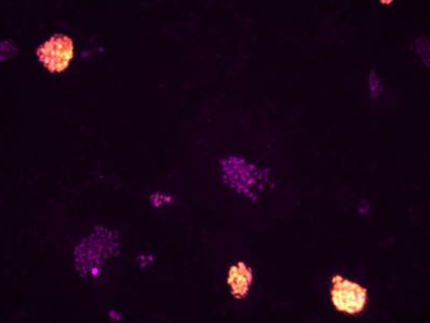The first ant methylomes uncover the relationship between DNA methylation and caste differentiation
Advertisement
An international team led by New York University School of Medicine and BGI has completed the first genome-wide and single-nucleotide resolution DNA methylomes of two ant species: Camponotus floridanus and Harpegnathos saltator. It provides new insights into the relationship between epigenetic regulation and caste differentiation of ants and also shed light on the epigenetic mechanism involved in social behavior, neurobiology and life-span of other animals. The latest study was published in Current Biology.
As one of the eusocial species, ants live in a society with strict hierarchy. Their colony members show extreme phenotypic plasticity, usually varying in morphology, behavior and physiology. The two ant species used in this study, C. floridanus and H. saltator, contrast in their behavioral flexibility, caste specialization, and social organization. C. floridanus lives in large organized colonies, in which only the queen lays fertilized eggs; when the queen dies, so does the colony. Non-reproductive individuals belong to two separate castes, major and minor workers, which exhibit differences in morphology and behavior established during development purely on environmental grounds. In contrast, the H. saltator social system and division of labor are more basal: dimorphism between queens and workers is limited, and when the queen dies she is replaced by workers that become functional queens, called gamergates. Thus, these two ant species provide compelling experimental paradigms to investigate epigenetic processes that affect organisms as a whole.
In this study, the researchers sequenced and analyzed the methylomes of different castes and different developmental stages of C. floridanus and H. saltator. They reported that, in the ant genomes, methylcytosines are found both in symmetric CG dinucleotides (CpG) and non-CpG contexts and are strongly enriched at exons of active genes. The authors also indicated that the presence of non-CpG methylation in adult ants was unexpected, as non-CG methylation was only found in mouse and human embryonic stem cells (ESCs) previously, and this suggests the possibility of biologically functional non-CpG methylation in ants. In addition, their comparative analysis also suggested that an exonic DNA methylation pattern may correlate with alternative splicing events, such as exon skipping and alternative splice site selection.
Although C. floridanus and H. saltator diverged from each other over 100 million years ago, researchers found that several genes displaying caste-specific and developmental changes in DNA methylation were conserved between the two species, including genes involved in reproduction, telomere maintenance, and non-coding RNA metabolism. In vertebrates, allele-specific DNA methylation (ASM) underpins some important epigenetic phenomena such as parental imprinting, while it has not been reported in invertebrates yet. In this study, researchers found several loci are methylated and expressed monoallelically, and in some cases, the choice of methylated allele depends on the caste.
"The discovery of ASM in ants opens a new way for investigating the roles of DNA methylation in shaping caste identity and social behavior." said Qiye Li, Project Manager from BGI.























































